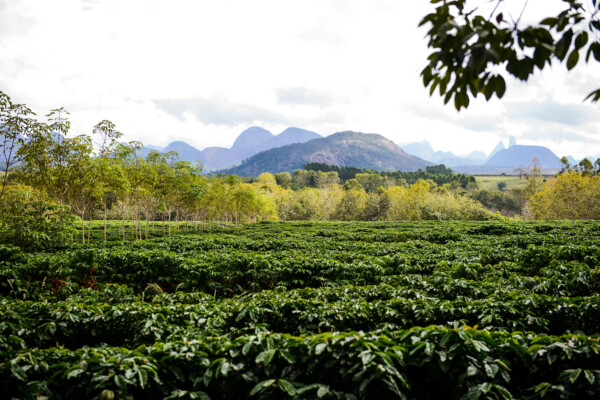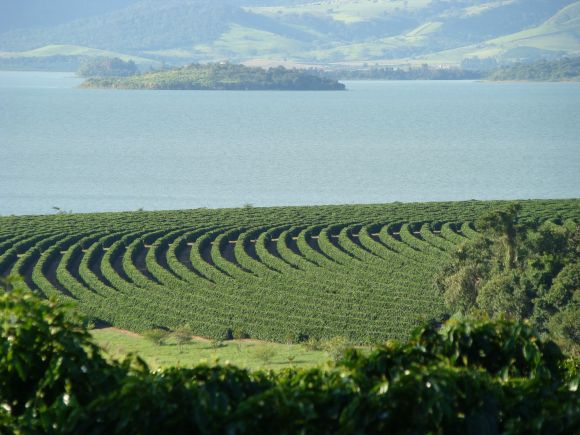
20% of the world’s biodiversity is in Brazil, 66% of its forests are protected, and the country is developing a coffee industry that removes carbon from the atmosphere.
Climate change is the greatest challenge facing humanity today, featuring prominently on multilateral agendas and permeating public and private commitments to limit global warming to below 2°C by the end of this century.
Biodiversity loss is inextricably linked to climate change, as one challenge exacerbates the other. Rising temperatures and extreme weather events adversely affect the functioning and resilience of biodiversityrich ecosystems. Ecosystem degradation, in turn, contributes to higher greenhouse gas emissions that drive climate change.
The urgency of the biodiversity conservation agenda was underscored globally by the “Kunming-Montreal Global Biodiversity Framework” agreed at the 15th Conference of the Parties to the Convention on Biological Diversity (CBD), held in Canada from December 7-19, 2010.
Although there are many uncertainties about its implementation, the Framework has been signed by over 190 countries and is a milestone in the CBD’s new strategy, which will guide action to conserve biodiversity and ecosystem services over the next three decades. The Framework includes a set of 23 goals to be achieved by 2030 and four long-term goals for 2050 that focus on the harmonious coexistence of people and nature.
The quantitative goals call for the conservation of 30% of terrestrial, inland water, coastal and marine areas by 2030, which is why they have become known as the 30×30 goals, a reference for the Kunming-Montreal Framework in the same way that 1.5 degrees Celsius is for the Paris Agreement.
Financially, the framework calls for up to $200 billion per year to be made available for biodiversity conservation, although it is not clear how these funds will be used. Goal 19 calls for developed countries to provide $20 billion per year to developing countries starting in 2025. This will increase to $30 billion per year by 2030.
Goals 7, 10 and 11 also stand out because they are directly related to the agri-food systems of which coffee takes part. In short, they address the rational use of fertilizers and nutrient cycles to reduce losses of these elements to the environment; reducing the overall risk from pesticides and highly hazardous chemicals by at least half, including through integrated pest management (IPM); promoting sustainable intensification and agroecology; and adopting naturebased solutions to enhance ecosystem services such as regulation of air, water, climate, soil health, pollination, disease risk reduction, and protection against hazards and natural disasters.

Goal 15 is also noteworthy because it encourages regulation of the private sector. Countries are required to take legal, administrative or policy measures to ensure that large transnational corporations and financial institutions carry out due diligence on their impacts on biodiversity, promote actions aligned with sustainable production patterns, and provide information to encourage sustainable consumption.
As pointed out by Agroicone, Goal 15 can bring about a huge change in the private sector’s attitude towards biodiversity, and a major challenge will be the development of approaches and methodologies that take into account the heterogeneity of the impacts and dependencies on biodiversity of the different economic sectors, which should be negotiated within the Global Framework over the next two years.
In this context, practices aligned with the conservation and sustainable use of biodiversity should be valued and strengthened, as they enhance the environmental services that agribusiness provides to society, while maintaining a healthy relationship with nature, on which the sector depends to obtain genetic resources that are fundamental for the development of varieties resistant to biotic and abiotic factors, pollination services, biological pest control agents and organisms that promote soil fertility, among others.
The effective implementation of the Forest Code by the federal entities is also urgent, given its advanced instruments, such as the Rural Environmental Registry (CAR), the Environmental Regularization Program (PRA) and the Environmental Reserve Quota (CRA), which favor the conservation of native vegetation and its restoration, when necessary, in private areas.
A photograph of land use and occupation produced by CAR over 10 years of the Forest Code’s effectiveness shows a clear line between the preservation of native vegetation and Brazil’s agricultural production. According to a study carried out by Embrapa Territorial based on CAR data, there are 43.9 million hectares of preserved native vegetation within rural properties in the main coffee-growing states of Brazil.

It is worth remembering that Brazil, the world’s leading coffee supplier, has 20% of the world’s biodiversity, 66% of its forests are protected and a sustainable coffee industry that removes carbon dioxide from the atmosphere. A study promoted by Cecafé, under the scientific supervision of Professor Carlos Cerri (Esalq/Usp) and Imaflora, found that 10.5 tons of CO2eq are removed from the atmosphere each year for every hectare of coffee grown with good agricultural practices that have a positive impact on the chemical, physical and biological properties of the soil, air and water quality and the conservation of biodiversity.
The Brazilian coffee growing and exporting sector is characterized by developments based on science. Through its various socio-environmental governance actions, it seeks to strengthen good environmental, social and governance practices throughout the supply chain, in line with global coffee trade trends.
This is the scenario in which the ninth edition of the prestigious Coffee Dinner & Summit will take place, hosted by Cecafé on May 25 and 26, 2023, in Sao Paulo (SP). The theme “Production Growth: its Challenges and Opportunities in ESG Times” will bring together important specialists and leaders of the national and international coffee agribusiness to discuss market trends in terms of sustainability and socio-environmental governance criteria. Cecafé, as the representative of the Brazilian coffee exporters, will facilitate the debate and exchange of experiences on the main issues. Learn more at https://coffeedinner.com.br/.
Marcos Matos
CECAFÉ CEO
Silvia Pizzol
CECAFÉ Sustainability Manager


Leave A Comment